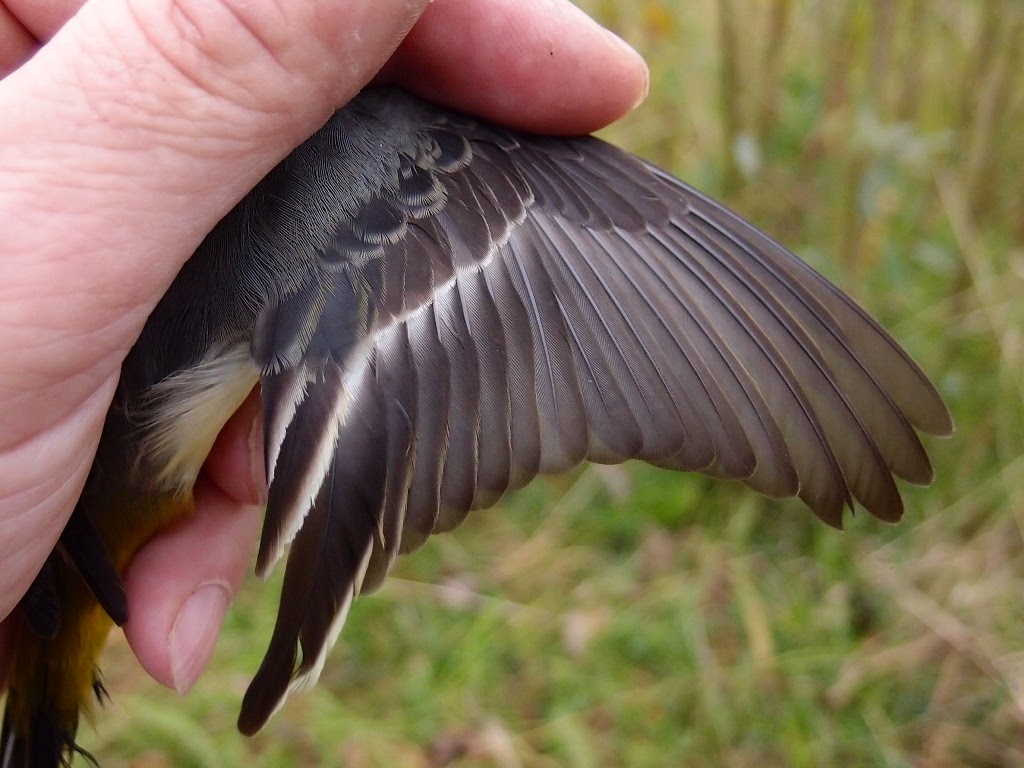I had set the usual nets up at first light and was playing Grey Wagtail on the MP3 player at one net and Goldcrest at another. It wasn't long before I heard a Grey Wagtail flying over from the north east and I was hopeful of catching it but on checking the net I was pleasantly surprised to find I had actually caught five. I extracted the birds and went on to the net with the Goldcrest lure and found I had also caught five Goldcrests; a great start to the morning.
 |
| Grey Wagtail (Motacilla cinerea). A stunning species and grey in name only. |
 |
| Grey Wagtail (Motacilla cinerea). A cracking bird whichever way you look at them. |
 |
| Grey Wagtail (Motacilla cinerea). Another view showing more of the upperparts. |
 |
| All the Grey Wagtails caught were first year birds and had some retained juvenile coverts. This bird has 7 old outer greater coverts and 2 old tertials. |
 |
| In this bird the outer 3 greater coverts are old juvenile feathers with the remaining greater coverts and tertials being new having been replaced in the post juvenile moult. |
Ringing revealed there were more Goldcrests around than would have been recorded from the number heard calling with a total of 15 ringed. Warblers were very thin on the ground with 3 Chiffchaffs ringed and only 1 Blackcap heard tacking. This is in stark contrast to Tuesday (9th) when 10 Blackcaps, 9 Chiffchaffs and a Willow Warbler were caught. Ringing totals for the morning were - Grey Wagtail 15, Goldcrest 15, Chaffinch 6, Chiffchaff 3, Reed Bunting 3, Yellowhammer 2, Goldfinch 1.
 |
| Yellowhammer (Emberiza citrinella). This adult male was just finishing its moult and was still replacing some of the feathers of the head. |
 |
| Adult male Yellowhammer (Emberiza citrinella), same bird as above. I have caught 18 this month so far but all the others have been juveniles. |
 |
| Female Reed Bunting (Emberiza schoeniculs). Only 3 ringed today but small numbers have been moving through the site as indicated by the lack of any retraps. |

No comments:
Post a Comment